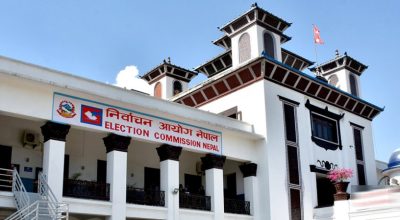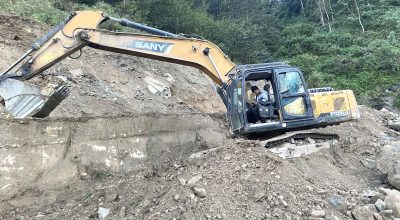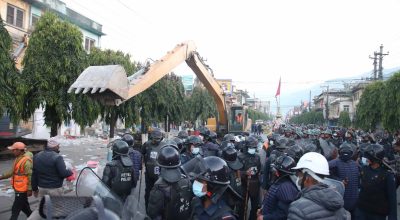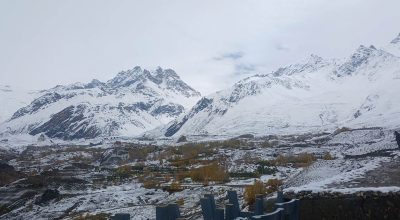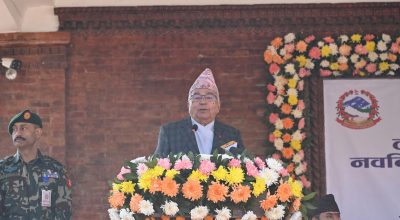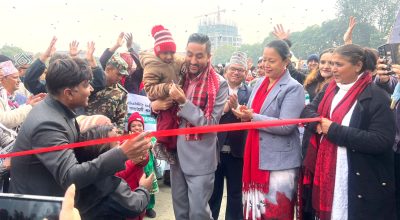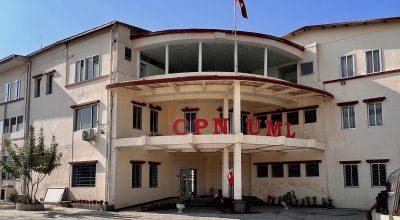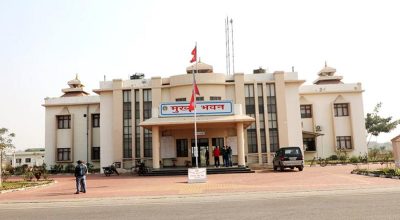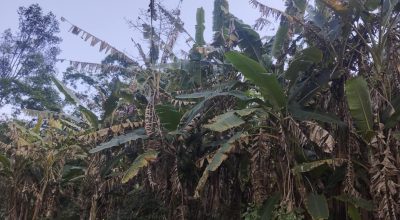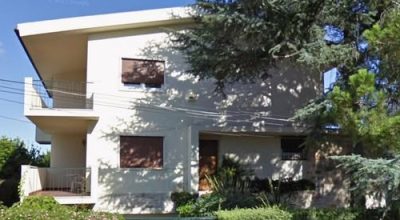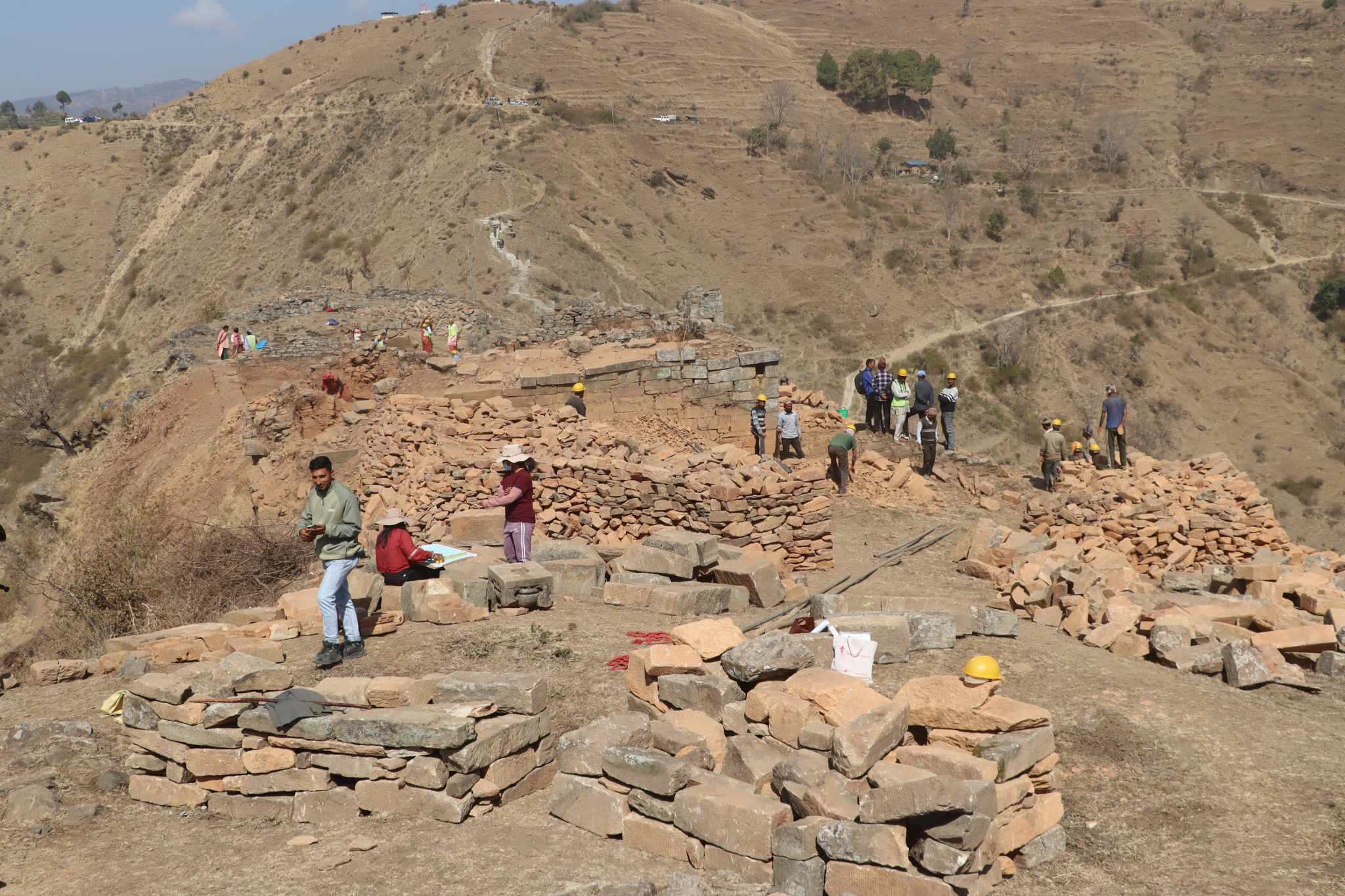
Dadeldhura, Feb 20: Excavation has begun at Ajayameru Kot, a site of historical significance located in Ajayameru Rural Municipality, Dadeldhura district, which holds a crucial place in the history of the Doteli kingdom. A team from the Department of Archaeology has initiated the excavation process.
The rural municipality allocated Rs 9 million for the excavation project, and the archaeological team has been conducting the excavation for the past 23 days with this funding.
According to Chief Archaeological Officer Bhaskar Gyawali, Ajayameru Kot was built in the exquisite architectural style of the Katyuri monarchical dynasty. This is the first time excavation and research have been conducted at the site. Due to the unique artistry and construction techniques found here, it is believed to be within the influence of the Katyuri dynasty.
As per Gyawali, numbering of the discovered ruins is currently in progress. He stated, “The distinct artistic style and construction techniques of Ajayameru Kot differ from the temples located east of the Karnali River.”
Preliminary findings from the excavation indicate a unique architectural layout, where a central pavilion (mandap) is flanked by temples (devals) on either side. Meeting halls and ancient water structures (naulas) also exhibit distinctive designs. Another team from the Department of Archaeology will conduct further research as part of efforts to include Ajayameru Kot in the UNESCO World Heritage List.
Call for preservation and promotion
Saraswati Khadka, State Minister for Social Development of Sudurpashchim Province, emphasized the need for all three tiers of government to focus on the preservation and promotion of historical and tourist sites like Ajayameru Kot. She assured that the provincial government is ready to provide necessary support for such initiatives.
Ajayameru Rural Municipality Chairman Umesh Bhatta stated that, given the increasing significance of Ajayameru Kot’s preservation, the local government has requested additional funds and support from the federal and provincial governments.
According to historical findings, Ajayameru Kot was established in the latter half of the 13th century by two princes of the Katyuri dynasty, Sahastrapal and Nirayadev Pal. They are believed to have won a battle against the Sinja kingdom and declared an independent state, leading to the construction of the fortress.
Some historical accounts suggest that King Nagi Malla built the fortress, but available evidence confirms that it was constructed by the Pal rulers of the Katyuri lineage. It is believed that after capturing Ajayameru in 1441 AD, Nagi Malla of the Raika dynasty made it his stronghold. Copper inscriptions from King Nirayapaldev and stone inscriptions dating back to 1419 AD have been found at the site.
Ajayameru Kot features remnants of an ancient palace, water structures (naulas), temples (devals), stone pillars (virkhamba), artistic ceilings, and a royal meeting area. Of the three historic naulas currently at the site, only two remain in ruins, while one is still in use for drinking water. The intricate carvings on the stone temples and naulas reflect ancient architectural brilliance.
The main palace area of Ajayameru Kot is situated on a hill surrounded by a river. Reaching the fortress requires a steep 15–20-minute uphill climb from the riverbank. At the hilltop, remains of the palace and residences of the royal ministers and officials are visible.
The palace structure is now entirely in ruins, but it is believed that the original palace was seven stories high. The topmost floor allowed devotees to offer water to the Katyuri dynasty’s ancestral deity, Goddess Jagadamba Bhagwati, whose temple was built in Uttarakhand by the Katyuri rulers.
Nearby, there is a designated place where royal horses were tied, known locally as ‘Gholidans’ (horse stable).
A unique underground tunnel connects the fortress to the riverbank. This tunnel, made by carving through the ground and reinforcing it with stone, was used by queens for collecting water and bathing. To ensure visibility within the tunnel, 25 small windows were incorporated into the structure.
Adjacent to the riverbank, a historic royal meeting area known as ‘Okhadeki Mandaun’ exists. Slightly upstream, two ancient temples and three water structures (naulas) in Karputar fields have been preserved.
Ajayameru Kot stands as a significant site for exploring the architectural and cultural heritage of the medieval Malla period, attracting historians and visitors alike. #ajaymeru #nepal #architect #ancient






